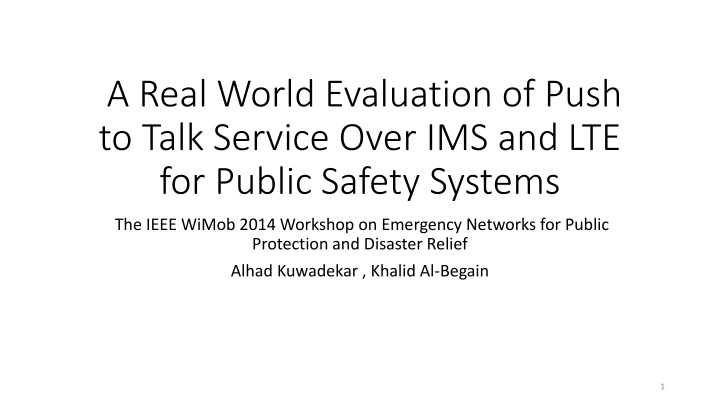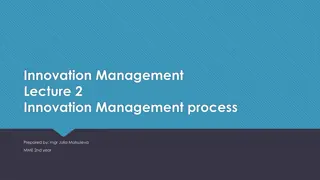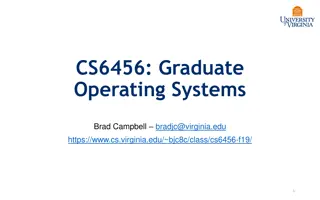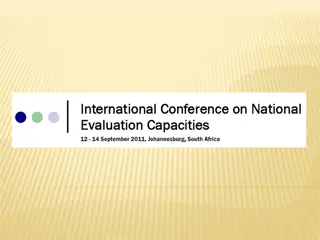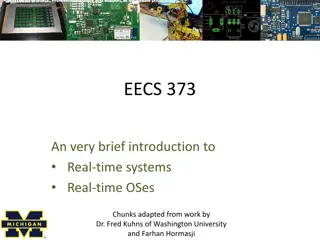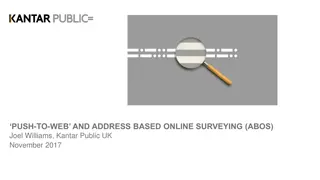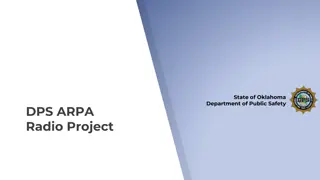Real-World Evaluation of Push-to-Talk Service for Public Safety Systems
This study evaluates the deployment of push-to-talk service over LTE for public safety systems, replacing traditional TETRA networks. It discusses the requirements, IMS architecture, OMA PoC specifications, implementation details, and the testing conducted on the EE UK 4G LTE network using Samsung Galaxy S4 devices. The study aims to assess the feasibility and effectiveness of the new communication system for emergency response scenarios.
Download Presentation

Please find below an Image/Link to download the presentation.
The content on the website is provided AS IS for your information and personal use only. It may not be sold, licensed, or shared on other websites without obtaining consent from the author.If you encounter any issues during the download, it is possible that the publisher has removed the file from their server.
You are allowed to download the files provided on this website for personal or commercial use, subject to the condition that they are used lawfully. All files are the property of their respective owners.
The content on the website is provided AS IS for your information and personal use only. It may not be sold, licensed, or shared on other websites without obtaining consent from the author.
E N D
Presentation Transcript
A Real World Evaluation of Push to Talk Service Over IMS and LTE for Public Safety Systems The IEEE WiMob 2014 Workshop on Emergency Networks for Public Protection and Disaster Relief Alhad Kuwadekar , Khalid Al-Begain 1
Outline Outline Introduction Public Safety System Requirements IP Multimedia Subsystem(IMS) Architecture Open Mobile Alliance(OMA) PoC Architecture Implementation Result Conclusion 2
Introduction Introduction Since 1997 Push to Talk has been deployed over Terrestrial Trunked Radio (TETRA). TETRA is a narrow band and too expensive to install , operate and maintain. Governments around the world are looking to replace TETRA with LTE for next generation broadband public safety networks. Open Mobile Alliance (OMA) standardize the PoC specifications and it is a part of the 3GPP IMS architecture. * PoC : Push-to-Talk over Cellular * 3GPP : 3rd Generation Partnership Project * IMS : IP Multimedia Subsystem 3
Public Safety System Requirements Public Safety System Requirements Call time setup is between 0.3 to 1.0 seconds. The background noise needs to be suppressed as much as possible. A priority scheme based on the severity of the job. The network needs to have sufficient levels of redundancy. Has the Direct Mode Operation. Has defined a minimum Grade of Service under normal , natural disaster and busy hour scenario. Provide security features. 4
IMS Architecture IMS Architecture HSS : Home Subscriber Server CSCF : Call Session Control Function PCSCF : Proxy-CSCF I-CSCF: Interrogating-CSCF S-CSCF: Interrogating-CSCF Courtesy of ipv6.com 5
OMA OMA PoC PoC Architecture Architecture * DM : Device Managent * XDMS : XML Document Management Server * UE : User Equipment * SIP : the Session Initiation Protocol * NW PoC Box : Network PoC Box * XDMC : XML Document Management Client 6
Implementation Implementation XMDS : built on PHP running on CentOS Cell Phone : Samsung Galaxy S4 App : GenXfone Network : the EE UK 4G LTE network Measurement : 4 PTT user equipment and 200 calls were made on Saturday for each scenario 7
Resource : Implementation of IMS- based PoC Service with Context-Aware Interaction 8
Results Results Scenario 1 : No traffic on the IMS network. Result : The average the time taken for a PTT call was 2.556 seconds. Scenario 2 : An IMS traffic generator called Seagull was used to generate traffic on the IMS network. The number of calls generated by Seagull was gradually increased from 100 to 2000 per second. Result : After 300 calls it started to slow down , and from 1500 to 2000 calls the failure rate was 1/10. Scenario 3 : Test how the PTT system performs at an event with over 10,000 people. Result : The failure rate was 100% over LTE network 9
Scenario 1 : Scenario 2 : 10
Conclusion The performance of the PTT service drops significantly by multiple simultaneous calls. It is recommended that a separate IMS should be setup for PTT service to work efficiently. The PTT fails to operate on a shared network space when there are thousands of users in the same cell space. A reserved channel space is made available to the public safety services. This channel space should not be allocated to any member of public. 11
